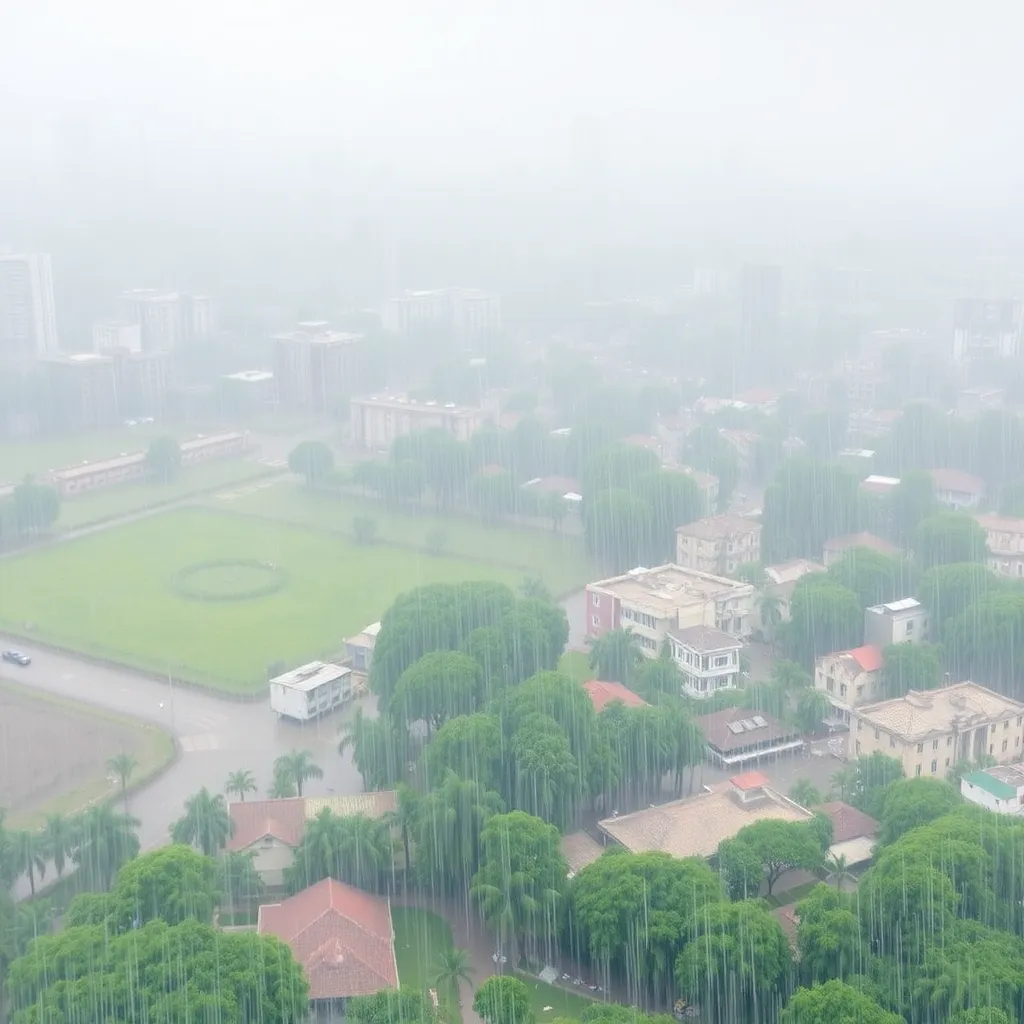
Dengue fever, a mosquito-borne viral disease, has become a global health threat, with Sri Lanka being one of the countries hit the hardest. In this comprehensive study, researchers from the University of Colombo have uncovered the intricate relationship between rainfall patterns and the dynamics of dengue outbreaks in the Colombo district, the region with the highest recorded dengue threat in the country.
By integrating real-time rainfall data into a mathematical model, the researchers were able to accurately estimate the fluctuations in mosquito populations and the resulting impact on dengue transmission. The study reveals that monsoon rainfall plays a crucial role in creating ideal breeding conditions for the Aedes mosquitoes, the primary vectors of the dengue virus. This seasonal pattern of rainfall directly influences the surge in dengue cases, with the researchers accurately predicting major outbreaks in 2017 and 2019.
The findings of this study provide valuable insights into the complex interplay between environmental factors and disease dynamics, offering a foundation for developing an effective early warning system to mitigate the threat of dengue in Sri Lanka and potentially other regions facing similar challenges.

Unraveling the Dengue Enigma: The Crucial Role of Rainfall
Dengue fever, a mosquito-borne viral disease, has emerged as a significant global health concern, with Sri Lanka being one of the countries hit the hardest. In the Colombo district, the region with the highest recorded dengue threat in Sri Lanka, researchers from the University of Colombo have delved deep into the intricate relationship between rainfall patterns and the dynamics of dengue outbreaks.
Mapping the Dengue Threat in Colombo
The Colombo Municipal Council (CMC) area, with a staggering population density of 24,857 residents per square kilometer, stands out as the most densely populated region in the Colombo district. This densely packed urban environment, coupled with the region’s tropical climate, creates an ideal breeding ground for the Aedes mosquitoes, the primary vectors of the dengue virus.
The researchers found that the seasonal rainfall patterns, driven by the Southwest and Northeast monsoons, play a crucial role in shaping the emergence and spread of dengue in the Colombo district. These monsoon rains create an abundance of stagnant water sources, which serve as prime breeding grounds for the Aedes mosquitoes, allowing their populations to surge rapidly.

Fig. 2
Quantifying the Impact of Rainfall on Vector Density
To capture the dynamic interplay between rainfall and dengue transmission, the researchers developed a mathematical model that integrates real-time rainfall data. This model allowed them to estimate the fluctuations in mosquito populations and the resulting impact on dengue incidence within the human population.
Unlike previous studies that assumed a constant mosquito population, the researchers introduced an innovative approach to indirectly estimate the per-capita vector density by leveraging the observed correlation between rainfall and vector abundance. This method provided a more targeted and accurate estimation of vector populations, leading to improved predictive capabilities.
Predicting Dengue Outbreaks with Precision
The researchers’ model accurately predicted the major dengue outbreaks that occurred in the Colombo district in 2017 and 2019. By capturing the seasonal variations in monsoon rainfall and their impact on vector populations, the model was able to forecast the timing and intensity of these outbreaks with a high degree of precision.
The study’s findings also revealed instances where the model displayed larger uncertainties in its estimates, suggesting the influence of additional factors beyond rainfall, such as human mobility and environmental pollution, particularly during festive seasons when population density and interactions increase.

Fig. 3
Implications and Future Directions
The insights gained from this study have significant implications for public health authorities in Sri Lanka and potentially other regions facing similar dengue challenges. By understanding the critical role of rainfall in driving vector population dynamics and dengue transmission, public health officials can now develop targeted and proactive intervention strategies.
These strategies may include:
– Timely deployment of vector control measures, such as fogging and the release of Wolbachia-infected mosquitoes, to disrupt the breeding cycle and reduce mosquito populations before anticipated outbreaks.
– Issuing early warning systems to the public, empowering communities to take preventive actions to eliminate potential breeding sites.
– Strengthening disease surveillance and diagnostics to enhance preparedness and response capabilities.
Expanding the Frontiers of Dengue Research
While this study provides a solid foundation for understanding the influence of rainfall on dengue dynamics in the Colombo district, the researchers acknowledge the need for further exploration. Incorporating additional factors, such as human mobility patterns, environmental pollution, and vector species-specific characteristics, could enhance the model’s predictive accuracy and provide a more comprehensive understanding of the complex factors shaping dengue outbreaks.
By building on these findings, the scientific community can continue to advance the understanding of dengue transmission dynamics, ultimately paving the way for more effective prevention and control strategies. As the threat of infectious diseases amplifies due to climate change, the insights gained from this research offer a valuable blueprint for tackling the global challenge of dengue fever.
Author credit: This article is based on research by Piyumi Chathurangika, S. S. N. Perera, S. A. Kushani De Silva.
For More Related Articles Click Here
